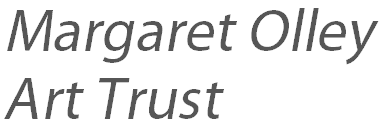A century ago young men from the New England region found themselves on the other side of the world fighting against the Ottoman Turkish army from Egypt to Lebanon.
The new exhibition Horse Power: Light Horse in Palestine – to Beersheba and beyond will provide the local community and visitors with the opportunity to look at the day to day life of these soldiers through their own words and images when it is opened by Max Tavener, President of the Armidale RSL Sub Branch at the New England Regional Art Museum at 6.00pm on Friday 29 September 2017.
“After the Great War commenced in August 1914 there was a rush of enthusiastic volunteers who joined up from communities around our region,” said Robert Heather, Art Museum Director. “Young men from small country towns like Armidale, Tamworth, Tenterfield, Walcha and Glen Innes were fighting a determined enemy in the rugged, biblical landscape of Jericho, Jerusalem, Megiddo and of course Beersheba, we can only imagine the impact that these experiences had on them at the time and for the rest of their lives.”
“One hundred years later these are locations straight out of today’s headlines as well,” he said. “In 1918 Australian troops were the first to enter the ancient Syrian city of Damascus and were welcomed by the inhabitants of Aleppo as liberators.”
The New England Regional Art Museum has been working with Guest Curator Bill Oates, University Archivist at the University of New England who has been researching and curating the exhibition which will launch the program for the commemorations of the Centenary of the Battle for Beersheba in the New England region, where many of the soldiers in the 4th Australian Light Horse Brigade came from.
“Most Australians would have heard about the Battle of Beersheba in October 1917 and the historic charge of the Australian Light Horse one evening to capture the water so desperately needed by the horses and men,” said Bill Oates, exhibition curator. “Fewer people know about the long preparation leading to that moment and the additional year of successful campaigning that followed that day.”
“Many New Englanders served in this campaign and their recollections and collections provide us with detail of the logistics and effort required to reshape the region as the Ottoman Empire was defeated.”
Horse Power draws upon historical collections including the UNE Archive, the 12/16 Hunter River Lancers History Room and loans from the Australian War Memorial including a painted portrait of Australia leader General Sir Henry Chauvel and a sketchbook by war artist George Lambert, whose painting The Charge of the Australian Light Horse at Beersheba, 1917 became an iconic image of World War One.
The exhibition will include never before exhibited photographs, diaries and memorabilia from local private and family collections which will help tell the story of the deployment to Palestine, the campaign and the historic Battle of Beersheba from a number of perspectives.
The exhibition has been developed as a partnership project between the New England Regional Art Museum and the University of New England and will be on display from 29 September 2017 until Sunday 11 February 2018.
Description of the Battle of Beersheba:
Beersheba, a heavily fortified town 43 km from the Turkish bastion of Gaza, was the scene of an historic charge by the 4th Light Horse Brigade on 31 October 1917. Beersheba anchored the right end of a defensive line that stretched all the way from Gaza on the Mediterranean coast. After two failed attempts to attack Gaza frontally it was decided to outflank it by turning the Turkish line around Beersheba. The attack was launched at dawn on 31 October but by late afternoon the British 20 Corps had made little headway toward the town and its vital wells. Lieutenant General Harry Chauvel, commanding the Desert Mounted Corps, thus ordered the 4th Light Horse Brigade forward to attempt to secure the position. Brigadier William Grant responded by ordering light horseman of the 4th and 12th Regiments to charge at the unwired Turkish trenches. Employing their bayonets as “swords” the momentum of the surprise attack carried them through the Turkish defences. The water supplies were saved and over 1,000 Turkish prisoners were taken. The fall of Beersheba thus opened the way for a general outflanking of the Gaza-Beersheba Line. After severe fighting Turkish forces abandoned Gaza on 6 November and began their withdrawal into Palestine.
Source: Australian War Memorial website
Official Centenary of the Battle of Beersheba
public events program
- 6.00pm Friday 29 September 2017
Exhibition opening Horse Power: Light Horse in Palestine – to Beersheba and beyond , To be opened by Max Tavener, President, Armidale RSL Sub Branch. New England Regional Art Museum, Kentucky Street, Armidale
- 10.30am Saturday 7 October 2017
Exhibition tour with curator Bill Oates in Horse Power: Light Horse in Palestine – to Beersheba and beyond, New England Regional Art Museum, Kentucky Street, Armidale
- 7.00pm Tuesday 31 October 2017
Commemoration Ceremony, A Squadron 12/16 Hunter River Lancers (open to public)
Gaza Training Depot, Allingham Street, Armidale
- 12.00pm Saturday 4 November 2017
12/16 Hunter River Lancers Church Service
St Peter’s Cathedral, 122 Rusden Street, Armidale
- 2.00pm Saturday 4 November 2017
Free Public Lecture by UNE Archivist Bill Oates “The road to Beersheba and Damascus”
University of New England and Regional Archives, CB Newling Campus, Kentucky Street, Armidale
Image above:
Artist unknown, Member of the 2nd Remount Unit AIF, training a new horse for Light Horse Units,
Postcard HRL Light Horse Museum Collection




